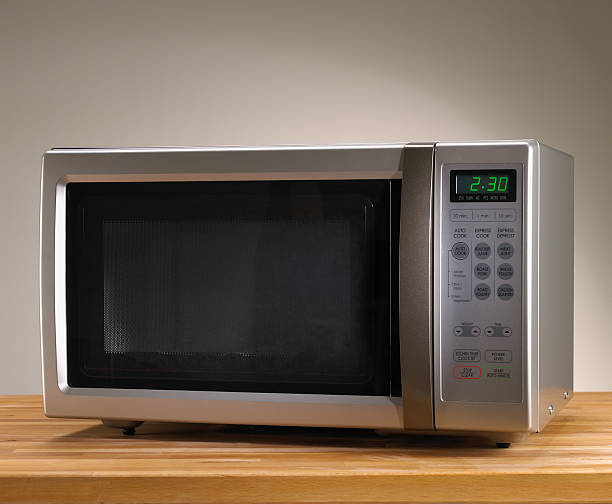Welcome to another informative post from TheKitchenApplianceDad.com! Today, we’re delving into a common kitchen query: Does microwaving kill bacteria? It’s an important question, especially in a world where food safety and health are paramount. We’ll explore how microwaves work, what they do to bacteria, and how you can use your microwave safely to ensure your food is both delicious and safe to eat.
Understanding Microwave Technology
Before we can answer whether microwaving can kill bacteria, let’s first understand how a microwave oven works. Microwave ovens heat food using electromagnetic radiation. These microwaves excite water molecules in the food, causing them to vibrate rapidly and generate heat through this friction, which cooks the food.

The Science Behind Microwaves and Bacteria
How Microwaves Affect Bacteria
The primary way microwaves kill bacteria is through heat. When you heat foods to a high enough temperature, the bacteria that cause foodborne illnesses, such as Salmonella, E. coli, and Listeria, are destroyed. The key here is reaching and maintaining a high enough temperature for a sufficient period. According to the U.S. Food and Drug Administration (FDA), foods should be heated to 165°F (74°C) to safely eliminate most harmful bacteria.
Limitations of Microwaving in Killing Bacteria
While microwaves can generate the heat needed to kill bacteria, there are a few factors that can limit their effectiveness:
- Uneven Heating: Microwaves often heat foods unevenly, which can lead to cold spots where bacteria can survive. This is why stirring food during microwaving is crucial.
- Type of Food: High-fat and high-sugar foods can absorb microwave energy better than others, which may lead to uneven cooking.
- Microwave Wattage: Lower wattage microwaves might not be as effective in heating food uniformly or quickly as higher wattage units.
Best Practices for Using Your Microwave to Kill Bacteria
To maximize the bacteria-killing power of your microwave, follow these tips:
- Stir and Rotate: Always stir, flip, or rotate your food halfway through microwaving to avoid cold spots and ensure even cooking.
- Use a Food Thermometer: To make sure your food has reached 165°F (74°C), use a food thermometer. Insert it in several places to ensure even heating.
- Cover Food: Covering food with a microwave-safe lid or wrap helps trap steam and promote uniform heating.
- Allow Standing Time: Many people don’t realize that “standing time” is part of the cooking process. After microwaving, let your food stand for a couple of minutes. Residual heat will continue to cook it, further helping in even out the temperature throughout the food.
Microwaving Different Foods
Different types of foods require different handling in the microwave to ensure they are safe to eat. Here’s a quick guide:
- Raw meats and poultry: These should be cooked to their safe internal temperatures. For example, poultry should reach 165°F (74°C), ground meats should reach 160°F (71°C), and whole cuts of pork, lamb, veal, and beef should reach at least 145°F (63°C) followed by a three-minute rest time.
- Frozen foods: Always follow the manufacturer’s instructions. Many frozen foods need to be stirred or rotated during cooking to achieve safe and even heating.
- Reheating leftovers: Heat leftovers until they are steaming hot throughout (165°F or 74°C) to kill any potentially harmful bacteria.
Common Myths About Microwaves
Microwaves Produce Harmful Radiation
No, the microwaves in microwave ovens are not harmful. They are a form of non-ionizing radiation which means they do not have enough energy to cause chemical changes in substances like ionizing radiation does.
Microwaving Food Destroys Nutrients
Actually, microwaving is one of the best methods to retain nutrients in foods because it cooks quickly and without adding water. As with any cooking method, prolonged exposure to heat might break down vitamins and other nutrients, but microwaving generally preserves more nutrients compared to boiling, for example.
Key Takeaways
- Microwaves kill bacteria by heating: The primary mechanism through which microwaves kill bacteria is through heat. Foods need to be heated to at least 165°F (74°C) to kill most harmful bacteria effectively.
- Ensure even cooking: To combat uneven heating, stir, rotate, or flip your food midway through cooking. Use a food thermometer to check that your food has reached the appropriate temperature.
- Follow specific guidelines for different foods: Different foods require different handling in the microwave. Ensure you’re following the right steps for raw meats, frozen foods, and leftovers.
- Busting myths: Remember, microwaves do not produce harmful radiation that affects health, and they are often better at preserving nutrients in food compared to other cooking methods.
Navigating the nuances of microwave cooking can ensure that you use this appliance not just for convenience but also for safety. By understanding how microwaves interact with food and bacteria, you can make informed decisions about how to best use this common kitchen tool. Remember, the key to safe microwaving is all about temperature and even heating.
Thank you for tuning into this detailed exploration at TheKitchenApplianceDad.com. Whether you’re reheating leftovers or cooking a meal, your microwave can be a safe, efficient, and nutritious method of preparation when used correctly. Stay tuned for more insights and tips to make the most out of your kitchen appliances!


